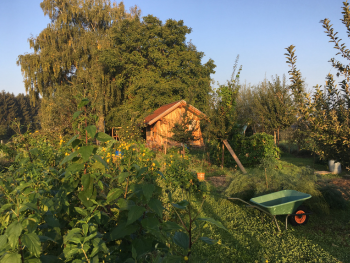Habitat complexity in organic agriculture enhances natural pest control, reduces pest damage to crops
A recent study published in Frontiers in Sustainable Food Systems found that maintaining and restoring habitat complexity in agricultural landscapes and on the farm can significantly improve natural pest control services and calls for a more integrated approach to pest management in organic agriculture. Results emphasize the importance of preserving native habitats and enhancing on-farm biodiversity to foster natural pest control, which leads to various economic, ecological, and public health benefits.
Landscape-level and on-farm diversification reduce pest damage to crops by increasing populations of natural enemies to pests. Landscapes that have less woody habitat and more simplified farms (i.e., fewer crops), as well as farms that used pest control me asures like vacuuming and organic-compliant pesticides, resulted in fewer natural enemies, more pests, and more pest damage to crops.
asures like vacuuming and organic-compliant pesticides, resulted in fewer natural enemies, more pests, and more pest damage to crops.
This study focuses on organic strawberry farms in California’s Central Coast. It examines how local and landscape-level diversification influences pest dynamics, specifically the interactions between strawberry pests, their natural enemies, and crop damage during the peak harvest season.
Habitat complexity refers to diverse land cover characteristics, including both crop and non-crop plant diversity, as well as the proportion and configuration of habitats. Such diversity supports healthier communities of beneficial insects, such as pollinators and pest predators, which can mitigate crop losses through natural pest control mechanisms.
The authors advocate for maintaining diverse habitats—especially promoting woody vegetation and managing invasive grasslands—to enhance pest control services. These findings align with USDA organic certification goals and show that best practices for organic farms include those that increase habitat on and off the farm, underscoring the necessity for practices that not only reduce pest populations, but also contribute to resilient ecosystems.


